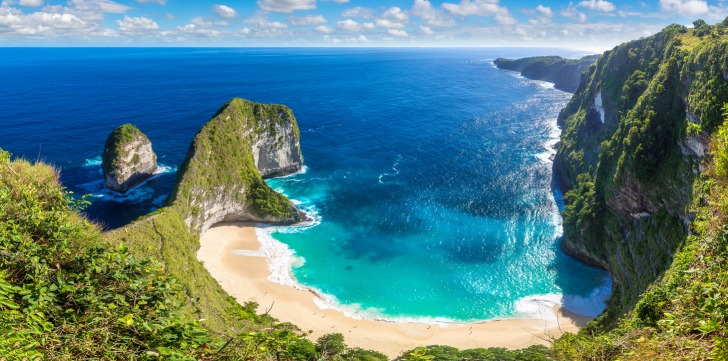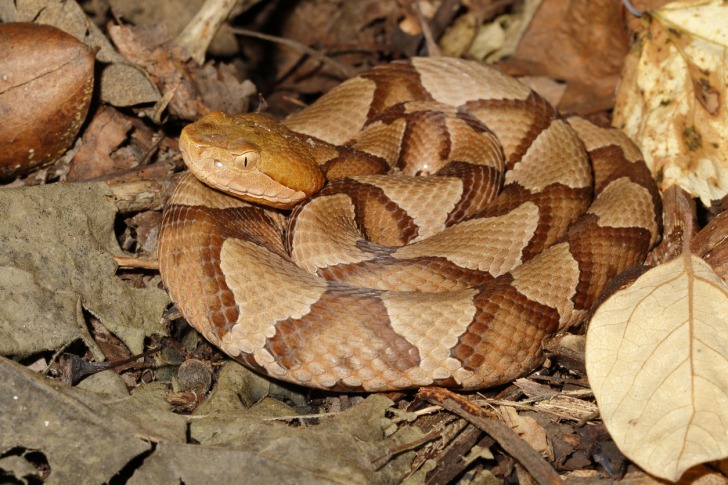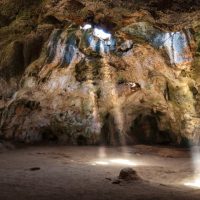Snakes have always been a part of the human consciousness, inducing primal reaction, an uncontrolled shiver.
Snakes are everywhere, but they prefer warm climes.
In fact, these ectothermic – cold-blooded – limbless reptiles can be found on every continent but Antarctica!
Snakes are carnivorous, but not all squamates are poisonous.
They tend to avoid people and feast on small animals or even other snakes.
There are over 3,400 snake species worldwide, and none of them are herbivores.
When visiting Bali, there is a reasonable chance that a snake may be seen.
Snake encounters are less likely in Denpasar than deep in the Balinese jungles or protected coves.
Overall, the snakes in Bali are not that aggressive.
And some species, like the Black and White snake, are considered peaceful.
But poisonous or not, not all snakes bite, so it is good to respect their territory while enjoying this island paradise.

Contents
So…Are There Snakes in Bali?
Bali, a province of Indonesia in the Lesser Sunda Islands, is known for its tropical beauty and pristine beaches.
A South Pacific paradise, this mid-chain island is home to roughly 64 types of snakes.
Land snakes make up the majority, numbering 46 different species.
18 water snakes live in lagoons, rivers, and the ocean.
Surprisingly, only about six or seven of these species are poisonous.
Snake Species in Bali
With 64 species, Bali’s snakes come in all colors and sizes, making it hard to know which are dangerous and which are deadly.
When visiting, a little information can go a long way, but it is best to treat all island reptiles with respect.
Some of the most deadly snakes throughout the island include.
Blue Krait
Considered Bali’s most venomous snake, the Blue Krait is multi-colored with black and white rings, or grey, dark brown, or orange.
Hard to recognize, The Blue Krait prefers the night.
It has a painless bite – damaging the heart and breathing.
It does not like light.
Island Pit Viper
A co-contender for the most venomous bite lives in trees.
It is green to greenish brown with a triangular head.
The snake prefers to hunt at night, preying on frogs, lizards, small birds, and rodents.
King Cobra
Found throughout the Asian subcontinent, this is the world’s longest venomous snake – 4 meters.
The snake is mainly found in west Bali.
Musculature lets the reptile rise vertically to human height.
The King Cobra’s venom causes respiratory failure, but it can also strangle its prey.
Active during the day, there is no anti-venom for its bite.
Javan Spitting Cobra
A cousin to the King Cobra, this snake can also rise vertically.
Found in more rural areas, it hunts day and night for rodents and other snakes.
It can bite or spray its venom, causing respiratory failure. Luckily, there is anti-venom.
Banded Sea Krait
Technically a water snake, this black and grey banded Krait prefers caves or coves where it can nest among rocks.
This presents a danger for anyone walking the ragged coastline.
They are not an aggressive species but will bite if startled and highly venomous.
There is no anti-venom.
Asian Coral Snake
These snakes are extremely small – 13 inches long.
Its orange or yellow striping is rarely seen but is highly poisonous.
It prefers to be underground.
Unfortunately, medicine has no anti-venom for its bit.
Reticulated Python
A non-poisonous snake of Bali, it strangles its prey.
They grow up to 20 feet and are capable of a per-square-inch squeezing force of 90 lbs – easily crushing bone.
Brahminy Blind Snake
This uniquely small, grotesque snake is jet black and grows to roughly two inches.
It is found in flower pots and gardens throughout Bali.
It is also blind.
Burmese Pythons
Similar to the reticulated python, Burmese pythons were introduced into Balinese rice farms to control the rodent population.
Non-venomous, they attack their prey by constricting them.
These snakes are common and can grow to 25+ feet.
White-banded Wolf Snakes
This snake, although non-venomous, closely resembles the Banded Krait.
It is often found in rice fields.
Vine Snakes
These are also non-venomous snakes.
They prefer living in trees and can easily drop on an unsuspecting animal or human.
They prey on rodents, frogs, and lizards.
Bites from this snake are not deadly but can become infected without attention.

Is it Safe to Go on a Trek in Bali?
Bali was made for exploring.
Dense jungles and tropical beaches make Bali a dreamlike destination.
Bali has both a dry and a wet (rainy) season. Snakes, in particular, are more active during the rainy season.
If venturing inland, information and preparation are keys to staying safe.
Interesting Snake Facts in Bali
Visitors to Bali may hear of the “holy snake.”
This black and white Banded Sea Krait is found in a cave and is said to protect the ocean temple of Tanah Lot, which is located off the southwest coast.
3 Safety Tips for Exploring Nature in Bali
Don’t Touch!
Most snakes don’t like selfies.
They will usually leave you alone, but if they are startled or touched, they will strike.
Beware the rainy season.
Be aware of your surroundings, especially during the rainy season or in dense foliage.
Stay still and quiet.
Back away slowly.
Don’t scream or move suddenly, and keep the creature in your sight until you are safely away.
Another good tip when exploring Bali’s jungle is to dress protectively.
Wear long pants and closed shoes (no flip-flops).
These precautions may offer some protection.
Others suggest carrying a basic snakebite kit and knowing emergency numbers for treatment and snake identification.
Snakes are part of Bali’s history and heritage.
Most reptiles are native to the island; some were transferred by explorers and shipping.
Seven of the deadliest reptiles roam the jungles and deeper waters surrounding the island.
But, most Balinese snakes inhabit the less populated river valleys.
As human populations increase, some species have migrated into more inhabited communities – homes, gardens, village buildings, and rice fields – in search of food.
Running into a snake on Bali is always a concern, but the island’s beauty and history are well worth the risk.
Bali Safety Overview
READ THE FULL REPORT: Bali Safety Review
Safety Index:
- OVERALL RISK: MEDIUM
- TRANSPORT & TAXIS RISK: MEDIUM
- PICKPOCKETS RISK: LOW
- NATURAL DISASTERS RISK: HIGH
- MUGGING RISK: LOW
- TERRORISM RISK: MEDIUM
- SCAMS RISK: MEDIUM
- WOMEN TRAVELERS RISK: LOW
Frequently Asked Questions
How many people die every year from snake bites in Bali?
Bali has some of the most venomous snakes in the world.
However, they usually stay far away from people.
Throughout Indonesia, roughly 114 people succumb to snake bites annually.
Should you cut open a snake bit to remove the venom?
Only in Hollywood and old Boy Scout manuals is it OK to suck out the venom or use a tourniquet after a poisonous snake bit.
It is also possible to spread the venom by cutting the wound.
Do snakes have a sense of smell?
Snakes have a superior sense of smell.
It helps them hunt.
Because of this, they avoid strong smells such as sulfur, ammonia, and thick smoke.











